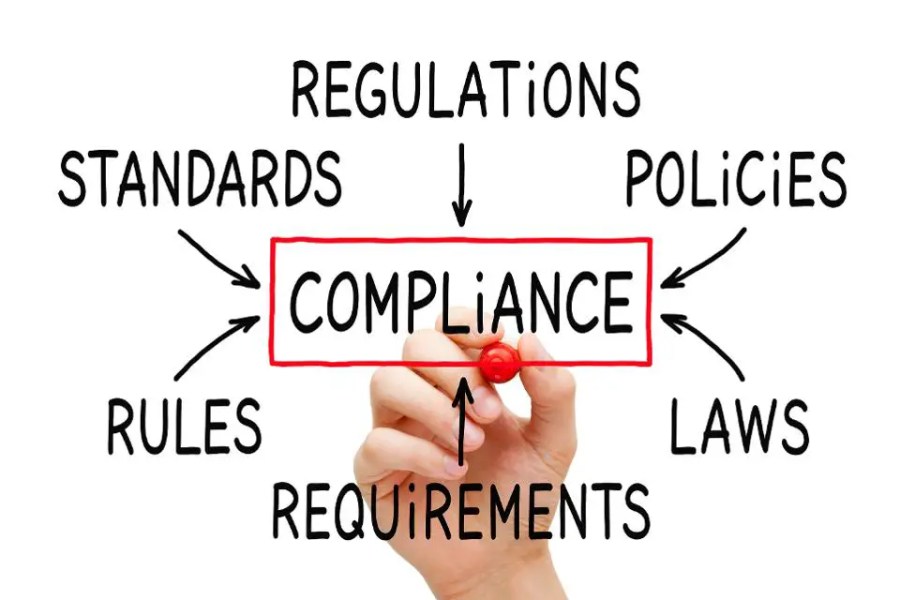
Articles
How to Document Business Rules: A Comprehensive Guide

The necessity of how to document business rules is essential for SMEs that are aiming to optimize their operations and augment decision-making. In this blog post, we will delve into sophisticated methods to help you become an expert in how to document business rules.
We will begin by discussing the importance of using concise language and maintaining an atomic structure when writing business rules. This approach ensures clarity and consistency throughout your documentation.
Next, we will delve into the world of visual representation with Unified Modeling Language (UML) diagrams, which can greatly enhance understanding of complex processes while learning how to document business rules.
Lastly, our exploration into decision simulation technology validation methods highlights the role Business Rules Management Systems (BRMS) play in refining decision-making processes as well as stressing the significance of validating your documented business rules through these technologies.
How to Document Business Rules
Business rules are the foundation of any successful organization. They provide structure and guidance for employees, customers, and stakeholders alike. Documenting business rules is essential to ensure everyone understands what’s expected of them in order to achieve success.
How do you document Business Rules?
The first step in documenting business rules is to define them clearly. This means understanding exactly what each rule entails and how it will be enforced within the organization. For business rules examples, if a company has a policy that all employees must wear uniforms while on duty, this should be documented with specific details about the type of uniform required and when it must be worn.
Once you have defined how your business rules work, you need to create a system for tracking them. This could include an online database or spreadsheet where each rule can be stored along with its associated information such as who needs to follow it and when they need to do so by.
It's also important that these records are regularly updated so that everyone knows which version of the rule applies at any given time — after all, no one wants their hard work going down the drain because someone forgot about an outdated regulation!
Finally, make sure your team is aware of these policies by providing training sessions or workshops on how they should adhere to each rule.
You may even want to consider incentivizing compliance by offering rewards for those who consistently follow regulations — think “employee of the month” awards or special discounts for customers who abide by certain standards set forth in your documentation process!
By taking these steps towards how to document business rules, organizations can ensure their teams understand expectations while avoiding costly mistakes due to miscommunication or lack thereof altogether — talk about killing two birds with one stone!

Utilizing Concise Language and Atomic Structure
When learning how to document business rules, it's crucial to use concise language and maintain an atomic structure. This means addressing a single issue without being dependent on other rules, which helps reduce complexity and ensures clarity when implementing guidelines across various departments. By focusing on clear communication, businesses can better understand the importance of each rule while avoiding confusion or misinterpretation.
Importance of concise language in documentation
The key to effective documentation is simplicity — keeping your content straightforward allows readers to easily comprehend the information presented. Plain language principles advocate for using everyday words, short sentences, and an active voice throughout your writing process.
Benefits of maintaining atomic structure for business rules
An atomic approach focuses on breaking down processes into their most basic components — individual tasks or steps that are independent of one another yet contribute towards achieving a common goal. In the context of documenting business rules, this translates into creating standalone guidelines that don't rely heavily on other existing policies but still fit within the overall framework of company operations. Maintaining an atomic structure offers several advantages such as easier comprehension, greater flexibility, and better scalability.
Simplified instructions lead to fewer misunderstandings among team members who need to follow the rules. Independent rules can be updated or modified without affecting other parts of the system, allowing for smoother adjustments as your business evolves. As your company grows, an atomic structure makes it easier to onboard new employees and integrate them into existing workflows with minimal disruption.
By utilizing concise language and atomic structure when documenting business rules, organizations can ensure that the information is clear and organized. Visual representation with UML diagrams further enhances understanding of complex processes by providing a visual aid to help comprehend them more easily.
Visual Representation with UML Diagrams
Unified Modeling Language (UML) diagrams provide an effective method for visually representing business rules. These visual aids provide clear overviews at different levels within the organization while allowing easy cross-referencing between related elements. Implementing these diagrams will help your team quickly grasp complex concepts by offering simplified illustrations that highlight essential information.
Types of UML diagrams used in documenting business rules
State Machine Diagrams capture the behavior of an object or system as it transitions through various states based on specific events and conditions. Activity Diagrams illustrate workflows and processes, showing how activities are coordinated across multiple actors or components. Use Case Diagrams depict interactions between users (actors) and systems, highlighting functional requirements from a user perspective.
All three types offer unique insights into your business operations, making them invaluable tools when it comes to documenting your company's policies and procedures.
Advantages of using visual representations for understanding complex processes
Our brains process visuals much faster than text — think about how quickly you can recognize a familiar logo versus reading its name. By using UML diagrams, you can convey complex ideas more efficiently and effectively.
Visuals make it easier for team members to discuss and understand business rules, fostering better communication across departments. When you have a clear visual representation of your processes, it becomes much easier to spot inconsistencies or gaps in the system. This leads to fewer mistakes during implementation and ultimately saves time (and headaches) down the line.
Using visual representations such as UML diagrams can help to better understand complex processes and ensure you business rules are documented accurately.
Decision Simulation Technology Validation Methods
Accurately and swiftly deciding is paramount in the ever-shifting business climate. BRMS can be used to aid businesses in rapidly and accurately deciding by incorporating predictive models into automated decisions. By incorporating predictive analytic models into rule-based decisions automatically, BRMS can assist organizations in improving overall decision quality while speeding up the process.
Role of BRMS in Improving Decision-Making Processes
A solid Business Rules Management Systems implementation allows businesses to maintain consistency across various departments by standardizing rules and processes and allow them to easily update or modify rules without affecting other parts of the system. It also reduces human error by automating complex calculations and logic evaluations. BRMS helps analyze data patterns to make informed predictions about future outcomes.
To ensure that your documented business rules are practical and efficient, it's essential to validate them against real-world scenarios using decision simulation technology. This will give you confidence that your team has covered all bases when implementing these guidelines throughout your organization.
Importance of Validating Business Rules through Decision Simulation Technology
Decision simulation technology, as its name suggests, simulates different situations based on input parameters provided by users or generated from historical data. It then evaluates how well documented business rules perform under those conditions before actual implementation takes place. One key benefit is identifying inconsistencies or errors within documented business rules early on helps avoid costly mistakes during implementation.
Also, by testing different rule combinations, decision simulation technology can help you identify the most efficient and effective rules for your organization's specific needs. Running simulations allows businesses to anticipate potential risks or challenges that may arise from implementing new business rules. This proactive approach helps organizations prepare for any unforeseen obstacles in advance.
Incorporating decision simulation technology into your validation process ensures that your documented business rules work and are not only accurate but also practical and efficient. So go ahead, and embrace this cutting-edge method of validating your company's guidelines - because when it comes to making smart decisions, there's no room for error.
Conclusion
The key to "how to document business rules" successfully is to use concise language and atomic structure, visually represent with UML diagrams, document user interfaces through wireframes, and validate decisions using simulation technology. Doing so can help entrepreneurs create a scalable system that streamlines processes/policies while providing an effective onboarding experience. Having the correct tools can allow for the optimization of effectiveness without reducing quality or precision, guaranteeing that your company stays agile as it develops.
Sign up now for a free 7-day trial with Trainual and scale your business!
Similar Blog Posts







